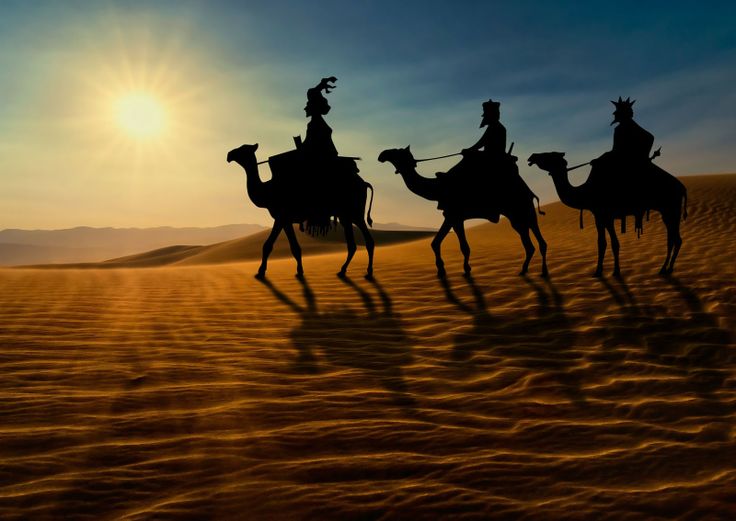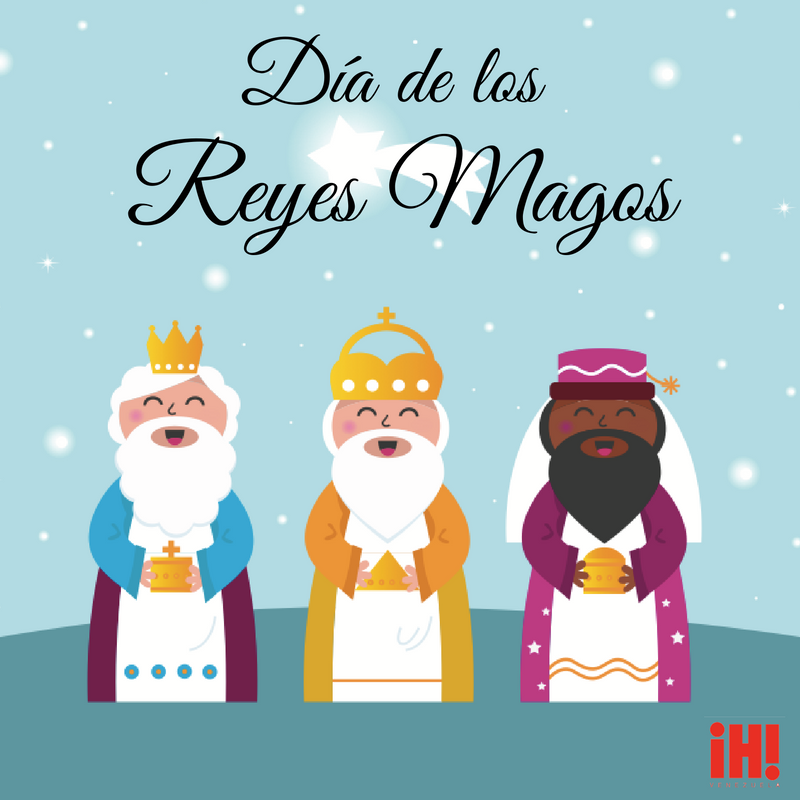Fiesta de los tres reyes: What Is Día de Los Reyes (Three Kings’ Day) & How Do You Celebrate It?
How Spain’s Three Kings Festival is Celebrated
A Kings’ Day parade in Granada, Spain; StockphotoVideo/Shutterstock
Mark Nayler
1 August 2018
Celebrated over two days, Spain’s annual Three Kings Festival (Fiesta de los Reyes) features colourful street parades, a delicious cake with a surprise hidden inside and a vibrant display of brightly illuminated costumes.
On the evening of January 5th every year, Spanish towns and cities are given over to the colourful parades of the Dia de los Reyes, or the Kings’ Day – a celebration of the arrival of the three wise men in Bethlehem after Jesus’ birth. Mechanised floats bearing effigies of Melchior (Arabia), Caspar (the Orient) and Balthazar (Africa) – or real life versions of the wise men played by members of the local council – and various other brightly-costumed participants trundle down major streets; as they pass, they throw out handfuls of sweets that rain down on the spectators gathered to watch their grand entry into the town.
A Kings’ Day parade in the Andalusian town of Velez-Málaga; Antonio Martin/Shutterstock
The sweets are supposedly just for kids, for whom this annual holiday has become the biggest deal for. But given Spaniards’ love of a freebie, you’ll see plenty of adults with upturned umbrellas trying to catch as many as possible, too. In major destinations such as Madrid and Barcelona, the sweet-throwing Kings’ parades attract crowds of hundreds of thousands and are televised across the country, but every Spanish town and city stages some kind of celebration on January 5th. The atmosphere is friendly and family orientated – a little like Semana Santa but minus the atmosphere of sombre religiosity – and the parades usually happen early evening so young children can watch them before going to bed.
The three kings or wise men perform the same role as Santa Claus at Christmas, so on the evening of the 5th children are supposed to leave a cleaned pair of shoes outside their doors for the nocturnal visitors to fill with gifts. In fact, a 2015 survey by Spanish toymakers association AEFJ showed that the colourful kings, or Magis as they’re sometimes called, are far more popular than Papa Noel amongst Spanish children: 68% said they preferred receiving presents from the wise men, with only 27% rooting for Father Christmas. Just as with Santa, children write letters to the kings and are encouraged to leave snacks for their exhausted camels before going to bed on the 5th. Good kids get presents and bad kids are supposed to receive a lump of coal.
In fact, a 2015 survey by Spanish toymakers association AEFJ showed that the colourful kings, or Magis as they’re sometimes called, are far more popular than Papa Noel amongst Spanish children: 68% said they preferred receiving presents from the wise men, with only 27% rooting for Father Christmas. Just as with Santa, children write letters to the kings and are encouraged to leave snacks for their exhausted camels before going to bed on the 5th. Good kids get presents and bad kids are supposed to receive a lump of coal.
More Spanish children prefer receiving gifts from the three kings than from Santa Claus; Free-Photos/pixabay
For many Spanish families, January 6th is an important public holiday in which everyone comes together to watch the children unwrap their second load of presents in as many weeks. There is abundant eating and drinking and the traditional cake is called the Roscon de Reyes, a circular sweet bread sprinkled with sugar and dried fruits. Embedded inside is a plastic little king or queen and whoever finds it is monarch for the day, meaning they are entitled to be waited on hand and foot. Hidden inside the cake is also a bean, the unfortunate recipient of which has to buy the Roscon the following year. That might not be such a bad thing though, as some bakeries have been known to bake diamonds and cheques worth thousands of euros into the cakes, as well as mini monarchs and beans.
Embedded inside is a plastic little king or queen and whoever finds it is monarch for the day, meaning they are entitled to be waited on hand and foot. Hidden inside the cake is also a bean, the unfortunate recipient of which has to buy the Roscon the following year. That might not be such a bad thing though, as some bakeries have been known to bake diamonds and cheques worth thousands of euros into the cakes, as well as mini monarchs and beans.
Keith Williamson/flickr | Spaniards tuck into the Roscon de Reyes cake on January 6th; Keith Williamson/flickr
Since you are here, we would like to share our vision for the future of travel – and the direction Culture Trip is moving in.
Culture Trip launched in 2011 with a simple yet passionate mission: to inspire people to go beyond their boundaries and experience what makes a place, its people and its culture special and meaningful — and this is still in our DNA today. We are proud that, for more than a decade, millions like you have trusted our award-winning recommendations by people who deeply understand what makes certain places and communities so special.

Increasingly we believe the world needs more meaningful, real-life connections between curious travellers keen to explore the world in a more responsible way. That is why we have intensively curated a collection of premium small-group trips as an invitation to meet and connect with new, like-minded people for once-in-a-lifetime experiences in three categories: Epic Trips, Mini Trips and Sailing Trips. Our Trips are suitable for both solo travellers and friends who want to explore the world together.
Epic Trips are deeply immersive 8 to 16 days itineraries, that combine authentic local experiences, exciting activities and enough down time to really relax and soak it all in. Our Mini Trips are small and mighty – they squeeze all the excitement and authenticity of our longer Epic Trips into a manageable 3-5 day window. Our Sailing Trips invite you to spend a week experiencing the best of the sea and land in the Caribbean and the Mediterranean.
We know that many of you worry about the environmental impact of travel and are looking for ways of expanding horizons in ways that do minimal harm – and may even bring benefits.
 We are committed to go as far as possible in curating our trips with care for the planet. That is why all of our trips are flightless in destination, fully carbon offset – and we have ambitious plans to be net zero in the very near future.
We are committed to go as far as possible in curating our trips with care for the planet. That is why all of our trips are flightless in destination, fully carbon offset – and we have ambitious plans to be net zero in the very near future.
Auto de los Reyes Magos
De Wikipedia, la enciclopedia libre
(Redirigido desde «Auto de los reyes magos»)
Ir a la navegaciónIr a la búsqueda
Página del códice toledano en que comienza el Auto de los Reyes Magos.
Auto de los Reyes Magos, también conocido como Adoración de los reyes magos, es una primitiva pieza dramática toledana, escrita probablemente en el siglo XIII según se deduce de la letra. Se encontró en un códice en la biblioteca del Cabildo catedralicio de Toledo, por el canónigo don Felipe Fernández Vallejo, y actualmente se conserva en la Biblioteca Nacional de España. El título se lo dio en 1900 el filólogo Ramón Menéndez Pidal. Se considera la primera obra teatral castellana y española.[1]
Se considera la primera obra teatral castellana y española.[1]
Índice
- 1 El texto
- 2 La historia
- 3 Argumento
- 4 Métrica y lengua
- 5 Véase también
- 6 Referencias
- 7 Bibliografía
- 8 Enlaces externos
Se conservan 147 versos aproximadamente de diversa métrica (polimétricos) que constituyen un texto incompleto. La asignación de los parlamentos a cada uno de los reyes es problemática pues el texto está escrito en un continuo como si fuera un texto en prosa, sin separación gráfica. Solo unas marcas sobre el texto dividen los parlamentos. En el mismo códice se encuentran comentarios sobre textos bíblicos y en dos folios se copia la representación.
La historia[editar]
La adoración de los Reyes aparece ya en el Evangelio de San Mateo aunque ahí se habla solo de sabios sin referencia al número ni a sus nombres. Estos magos mutan en reyes en Tertuliano (160-245) y Prudencio para generalizarse en el S XI. Este auto no refiere el dato de ser reyes pues los define como steleros, aficionados al estudio de las estrellas. El hecho de que sean tres los reyes va asociado a que sean tres los dones y a las supuestas reliquias conservadas en Colonia. Por supuesto es importante también la asimilación a la Trinidad, muy frecuente en la literatura medieval.
Este auto no refiere el dato de ser reyes pues los define como steleros, aficionados al estudio de las estrellas. El hecho de que sean tres los reyes va asociado a que sean tres los dones y a las supuestas reliquias conservadas en Colonia. Por supuesto es importante también la asimilación a la Trinidad, muy frecuente en la literatura medieval.
Los nombres de los reyes proceden del Evangelio Armenio de la Infancia y son frecuentes en otros textos españoles de la época. Uno de los aspectos más comentados es lo que se ha dado en llamar la duda de los reyes, así, el texto se relaciona con Evangelios de la Infancia apócrifos franceses donde aparece la ofrenda de regalos diversos para probar la divinidad del recién nacido.
“Si fuese rey de terra , el oro querá
si fure omne mortal, la mir[r]a tomará
si rei celestial, estos dos dexarátomará el encenso quel[e] pertenecerá“
La obra toma por tanto elementos de la tradición ampliamente divulgados junto con otros de difusión más reducida (la duda) y otros de plena originalidad como la disputa de los escribas.
Este teatro románico, relacionado con el Ordo stellae, está considerado como un drama litúrgico, que ampliaba al oficio sacro que representaban los clérigos, normalmente en este caso, en la catedral de Toledo en la época de la Navidad.
Rogier van der Weyden: Tríptico de la Epifanía (El Altar Middelburg o “tríptico Bladelin”, hacia 1450), en la Gemäldegalerie de Berlín.
El episodio escenificado describe a los ‘reyes’ Melchor, Gaspar, y Baltasar siguiendo la estrella en su viaje a Belén y su visita al rey Herodes. Pese a la inexistencia de acotación escénica de ninguna clase la representación se suele dividir en cinco escenas. La primera son tres monólogos simétricos en el que los steleros debaten sobre el hallazgo de una nueva estrella y su posible significado. La segunda escena presenta a los magos que deciden emplear los regalos para averiguar la verdadera naturaleza del infante. La escena tercera muestra a los magos visitando el palacio de Herodes que promete adorar también al niño. Después (escena IV) viene un monólogo de Herodes que teme el nacimiento del nuevo rey y hace llamar a sus sabios para que debatan sobre lo ocurrido. Finalmente Herodes debate con esos sabios y se interrumpe la obra en esta quinta escena.
Después (escena IV) viene un monólogo de Herodes que teme el nacimiento del nuevo rey y hace llamar a sus sabios para que debatan sobre lo ocurrido. Finalmente Herodes debate con esos sabios y se interrumpe la obra en esta quinta escena.
La obra muestra el interés del autor por acercar la trama al momento de la escritura como muestran los oficios de los sabios (abades, podestades, scrivanos, gramatgos) cercanos a los que el público solía conocer. Igualmente la referencia a la falsedad de los judíos en boca de los rabinos es un recurso ideológico.
La obra toma de la tradición medieval el uso libre del tiempo y el espacio que dificultaría su puesta en escena. Se ha pensado por ello en que la obra se representaba en un escenario con varios niveles en los que se iban colocando los actores.
Métrica y lengua[editar]
En la polimetría del texto predominan los alejandrinos, eneasílabos y heptasílabos. Encontramos rimas anómalas explicables por la evolución del idioma que comenzaba a diptongar ciertas vocales y que permite la neutralización de a/e y o/e.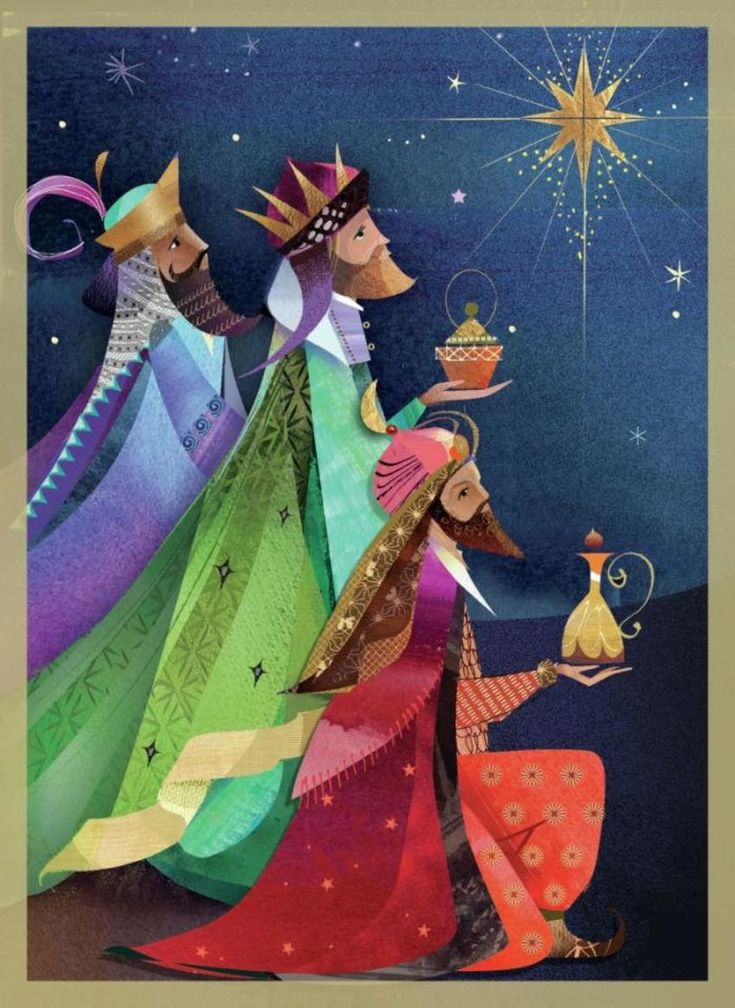 Estos rasgos hacen pensar en un autor proveniente de Francia entre los muchos clérigos de ese origen que estaban instalados en Toledo.[2] También se ha señalado el intento del autor por escribir en una lengua general para “la heterogénea población toledana”.
Estos rasgos hacen pensar en un autor proveniente de Francia entre los muchos clérigos de ese origen que estaban instalados en Toledo.[2] También se ha señalado el intento del autor por escribir en una lengua general para “la heterogénea población toledana”.
Véase también[editar]
- Drama litúrgico
- Literatura española en la Edad Media
- Teatro medieval español
Referencias[editar]
- ↑ Bibliotheca Augustana Consultado en diciembre de 2013
- ↑ Lapesa, Rafael. De la Edad Media a nuestros días. Estudios de historia Literaria Madrid 1967
Bibliografía[editar]
- Salvador Miguel, Nicasio. Teatro Medieval, Madrid, La Muralla, 1973.
- Salvador Miguel, Nicasio. Los orígenes del teatro en Historia de la Literatura Española ediciones Orbis.
- Donovan,R.B. The Liturgical Drama in Medieval Spain Toronto, 1958.
- López Morales, Humberto. Tradición y creación en los orígenes del teatro castellano Madrid, Ed Alcalá 1968.

Enlaces externos[editar]
- Wikisource contiene obras originales de o sobre Auto de los Reyes Magos.
- Auto de los Reyes Magos en la Biblioteca Virtual Miguel de Cervantes Consultado en diciembre de 2013
- Museo Auto de los Reyes Magos en Córdoba (España).
- Auto de los Reyes Magos, digitalizado y accesible en la Biblioteca Digital Hispánica de la Biblioteca Nacional de España
| Control de autoridades |
|
|---|
what date, date and history of the holiday
| Date in 2023 | Thursday 19 January 2023 |
| Celebrating: | in Russia, Ukraine, Belarus and other countries of the world |
| Church name: | Holy Epiphany. Baptism of the Lord God and our Savior Jesus Christ |
| Value: | baptism of Jesus in the Jordan River |
| Other names: | Baptism, Water Baptism, Epiphany, Jordan; obsolete – Epiphany, Teofania |
| Tradition: | prayers, divination, blessing of water, swimming in an ice-hole |
History of the holiday Traditions and rituals Signs
The Epiphany of the Lord is celebrated 12 days after Christmas 19January (or January 6 for Catholic churches that have Christmas on December 25), and this is the time when Christians remember Jesus and those wise men who were led to him by the Star of Bethlehem. Celebrated by Catholic and Orthodox Christians around the world.
Celebrated by Catholic and Orthodox Christians around the world.
History of the holiday
Epiphany is one of the oldest Christian holidays. It has been celebrated since the end of the second century, before the Christmas holiday was established. Like other Christian holidays, the church established Epiphany instead of one of the pagan Slavic rites. Back at 1996 BC The Egyptians honored the winter solstice, bringing honors to Aeon, the Mother of God. It is important that the holiday was established in the period of the Julian calendar.
Theophany also occurs when some churches remember that Jesus was baptized when he was about 30 years old and began to teach people about God. Baptism means “revelation” and both the visit of the wise men and his baptism are significant moments when Jesus was “revealed” as very important to the world.
Traditions and rituals
This is a big and important festival in Spain where it is also known as the “Festival of the Three Magic Kings” – “Fiesta de Los Tres Reyes Magi” and that’s when the Spaniards and some other Catholic children receive their Three Kings gifts!
On Epiphany morning in Spain, you can go to the local bakers and buy a special cake/cake called “Roscon” (that is, a ring-shaped bun).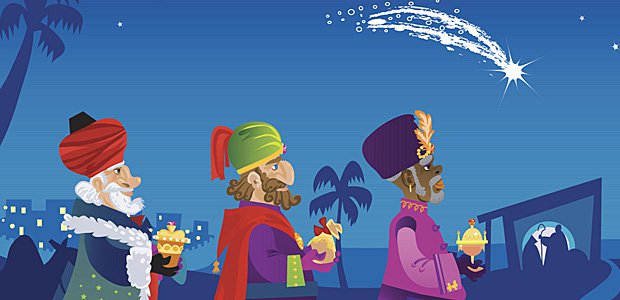 They are usually filled with cream or chocolate and decorated with a paper crown. In Catalonia, it is known as Tortell or Gato de Rua and is stuffed with marzipan.
They are usually filled with cream or chocolate and decorated with a paper crown. In Catalonia, it is known as Tortell or Gato de Rua and is stuffed with marzipan.
In France you can eat “Galette des Rois”, a type of flat almond cake. It has a toy crown cooked inside and is decorated with a golden paper crown on top.
There are similar traditions in Mexico, where Epiphany is known as “El Dia de los Reyes” (the day of the Three Kings). Traditionally, there is a special cake called “Rosa de Reyes” (“Three Kings”). The figure of the Baby Jesus is hidden inside the cake. Whoever has baby Jesus in a piece of cake is the “godfather” of Jesus this year.
In Portugal people take part in Epiphany singing known as “Janeiras” (January songs). On the island of Maderia they are known as “Cantar os Reis” (singing kings).
In Italy, some children also receive their Epiphany gifts. But they believe that an elderly woman named Befana brings them. The children put their stockings by the fireplace for Befana to fill them.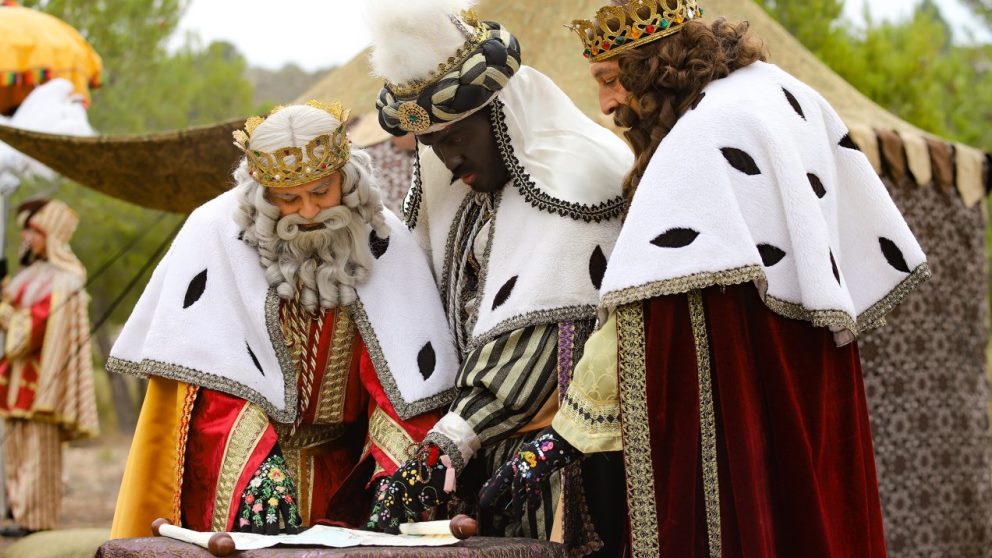
In Austria, in Epiphany, some people write with chalk a special sign over the front door. This is a reminder of the Wise Men who visited the baby Jesus. It is made from a year divided into two parts, with the initials of the names sometimes given to the “three wise men”, Kaspar, Melchior and Balthazar, in the middle. The sign is intended to protect the home for the coming year. Some parts of Germany also have a tradition of door markings.
At Epiphany in Belgium, children dress up as the three wise men and go from door to door to sing songs and people give them money or sweets. Children in Poland also sing for Epiphany.
In Ireland, Epiphany is also sometimes called “Nollaig na mBean” or “Women’s Christmas”. Traditionally, women get the day off, while men do housework and cooking!
In the Ethiopian Orthodox Church (which celebrates Christmas on January 7), twelve days after Christmas, 19January, the three-day celebration of the Ethiopian Timkat begins.
Epiphany, celebrated in Russia on January 19, commemorates the baptism of Jesus in the Orthodox Church. As elsewhere in the Orthodox world, the Russian Church conducts the rite of the Great Blessing of the Waters, also known as the Great Blessing of the Waters. Historical records show that the blessing of water events took place at the courts of Moscow tsars no later than 1525. According to historians, the blessing of the water procession was the most magnificent of the annual ceremonies of the royal court, comparable only to such special events as royal coronations and weddings. Believing that on this day the water becomes holy and endowed with special powers, Russian Orthodox Christians carve holes in the ice of lakes and rivers in the shape of a cross in order to bathe in the icy water. This practice has been popularized relatively recently; it was quite rare in tsarist times, but began to flourish from 1990s.
Epiphany bathing
Many unforgotten traditions have remained since the times of paganism.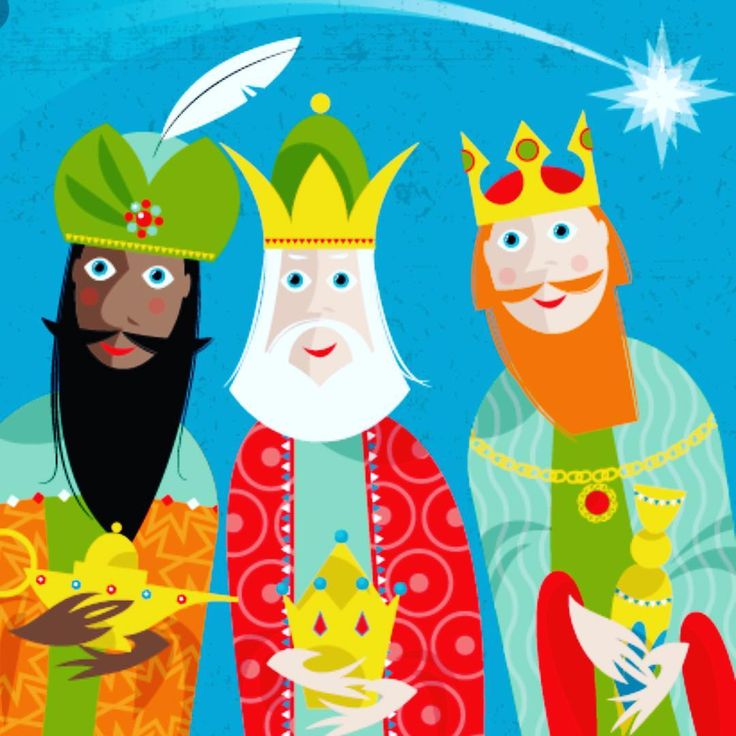 One of these is fortune-telling during the celebration of Christmas time. This is contrary to the sermons of the Orthodox Church. Therefore, the rite of Baptism is of great importance for the forgiveness of sins. On the eve, a hole is made in the rivers in the form of a cross. Priests consecrate it with the sign of the cross three times. After that, everyone can plunge into the hole. It is believed that such bathing is healing, and the rite itself comes from the sacred Jordan River, in which the first Christians were baptized.
One of these is fortune-telling during the celebration of Christmas time. This is contrary to the sermons of the Orthodox Church. Therefore, the rite of Baptism is of great importance for the forgiveness of sins. On the eve, a hole is made in the rivers in the form of a cross. Priests consecrate it with the sign of the cross three times. After that, everyone can plunge into the hole. It is believed that such bathing is healing, and the rite itself comes from the sacred Jordan River, in which the first Christians were baptized.
- It is believed that divination on Epiphany evening will give true results. However, according to Orthodox beliefs, fortune-telling is a grave sin.
- For protection from evil spirits, crosses are painted on all doors at Epiphany.
- In order to save the house from misfortune, one should not start quarrels and spread gossip this evening.
- It is a bad omen to work on the Epiphany evening, as well as the use of alcoholic beverages.

- The use of consecrated baptismal water will protect against diseases.
- The barking of dogs at Epiphany speaks of future prosperity in the family.
- Falling snow is a good sign, because on this day all water is considered sacred.
On this counter you can keep track of how many days are left until the feast of the Epiphany
Navarre (province) – Spain – Planet Earth
The landscapes of Navarre are wooded mountains, fertile river valleys, vineyards and tiny villages. Of particular importance to the Navarrese is their ancient capital of Pamplona, known outside of Spain mainly due to the San Fermin festival.
Most of the province of Navarre is occupied by the southern wooded spurs of the Western Pyrenees, turning into a treeless plateau.
History of the province
Navarre is a province in northern Spain, on the border with France. The name comes from the Basque word “nava” – “intermountain plain”. The main population of Navarre is concentrated in the valley of the Ebro River and in the administrative center of the province. The ancient Iberian people, whose self-name is Euskaldunak, we know by the name given to it by the ancient Romans: Vascons, in modern pronunciation – Basques. Modern Basques also live in France, many emigrated to Latin America, but most live in Spain – about 950 thousand people
The main population of Navarre is concentrated in the valley of the Ebro River and in the administrative center of the province. The ancient Iberian people, whose self-name is Euskaldunak, we know by the name given to it by the ancient Romans: Vascons, in modern pronunciation – Basques. Modern Basques also live in France, many emigrated to Latin America, but most live in Spain – about 950 thousand people
The capital of Navarre is one of the oldest Spanish cities. Pamplona was named after the Roman commander Pompey, who in the winter of 75/74 BC. e. captured the Basque settlement of Iruña and founded a Roman colony in its place. For the Romans, it was important to control the Pyrenean passes on the way from Iberia to Gaul, and they were almost not interested in the inland, hard-to-reach mountainous regions. There was no such active Romanization of the population as in other Roman provinces.
The independent Euskari (Basque) people, who spoke an unrelated Indo-European language, managed to preserve their language and national identity, despite the Visigoths and Franks who followed the Romans. In 738, the Moors invaded Pamplona, but they did not last long: after 40 years, the Moors were pushed back by the Frankish army, which was led by Charlemagne, who fought in the battle for Pamplona in alliance with the Basques. True, after providing military assistance, he ordered the demolition of the fortress walls, which terribly offended the Pamplonians. They retaliated by defeating the rearguard of the troops of the King of the Franks at Ronceval. The details of the battle are set out in the French medieval heroic epic “The Song of Roland”.
In 738, the Moors invaded Pamplona, but they did not last long: after 40 years, the Moors were pushed back by the Frankish army, which was led by Charlemagne, who fought in the battle for Pamplona in alliance with the Basques. True, after providing military assistance, he ordered the demolition of the fortress walls, which terribly offended the Pamplonians. They retaliated by defeating the rearguard of the troops of the King of the Franks at Ronceval. The details of the battle are set out in the French medieval heroic epic “The Song of Roland”.
By 824, Pamplona had already been liberated from the Arabs (and for the rest of the Iberian Peninsula, the Reconquista process dragged on until 1492) and was able to separate from the Frankish Empire. The core of the medieval Kingdom of Pamplona was formed. Its first king was Count Iñigo Arista (? – died in 851/852). A little-known but curious detail: it is very likely that he was the half-brother of the Muslim ruler Banu Qasi and they sometimes joined forces against external enemies.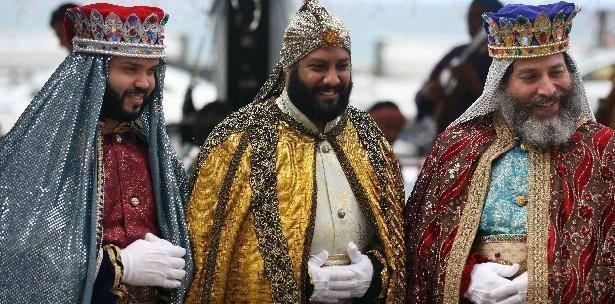 Under Iñigo, Pamplona did not participate in the Reconquista. The fight against the Caliphate of Cordoba and the expansion of the territory of the kingdom began the next king – Sancho I Garcia from the Jimenez dynasty (ruled from 905), it is from his reign that it is customary to count the history of Navarre.
Under Iñigo, Pamplona did not participate in the Reconquista. The fight against the Caliphate of Cordoba and the expansion of the territory of the kingdom began the next king – Sancho I Garcia from the Jimenez dynasty (ruled from 905), it is from his reign that it is customary to count the history of Navarre.
King Sancho III the Great, who ruled from 1000 to 1035, gained control over the entire north of the Iberian Peninsula: the territories of Leon, Castile, Aragon, the Basque lands of Spain and France were annexed. However, after his death, Navarre was divided among his four sons, who quarreled: brother killed brother, and a dynastic crisis ensued. Navarre lost part of its land and became dependent on Aragon. In 1234, the rule of the Basque dynasty of Jimenez was interrupted: the last king died childless, and a succession of kings of the French Champagne dynasty began. Navarre was in personal union with the French kingdom from 1285-1328.
In 1512, most of the kingdom – Upper Navarre – was conquered by King Ferdinand of Aragon (1452-1516) and annexed to Spain. Upper Navarre retained the status of viceroyalty until 1833, until it lost it, becoming one of the 17 autonomous communities within Spain. Its official name is Comunidad Foral de Navarre. And Lower Navarre, which is now part of France, until 1589 retained the status of the independent Kingdom of Navarre, until Henry of Navarre (Henry IV the Great, 1553-1610) became the king of France, which led to the unification of the lands.
Upper Navarre retained the status of viceroyalty until 1833, until it lost it, becoming one of the 17 autonomous communities within Spain. Its official name is Comunidad Foral de Navarre. And Lower Navarre, which is now part of France, until 1589 retained the status of the independent Kingdom of Navarre, until Henry of Navarre (Henry IV the Great, 1553-1610) became the king of France, which led to the unification of the lands.
Culture
Navarre differs from most parts of Spain in its rich forest resources. The traditional occupation of the Navarrans is logging. This is annually reminded by the ancient festival of the beginning of rafting – Almadia Day, which is celebrated in late April or early May by lowering rafts down mountain rivers into the valley. But in the first place in the economy of Navarre until the middle of the last century, until metallurgical and chemical plants were built in the region, agriculture was. Cattle and sheep are still bred here, farming in the intermountain valleys, viticulture and winemaking are still practiced.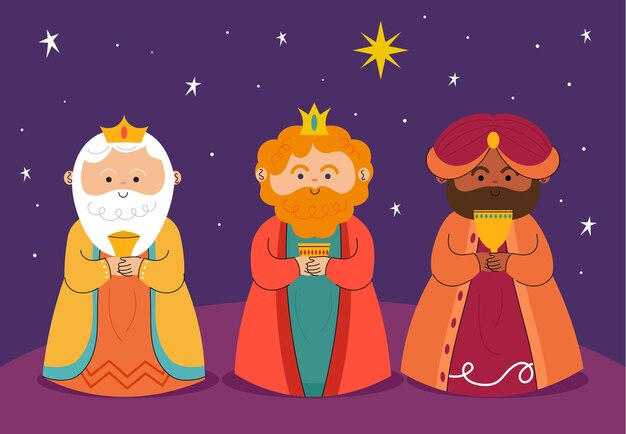
Wild vine species have been growing on the slopes here for millions of years. Large artificial plantations of grapes appeared here in the Roman period, and the heyday of winemaking fell on the Middle Ages. Indirectly, the development of winemaking was facilitated by the fact that the Way of St. James runs along the roads of Navarre – the road of pilgrims going to bow to the relics of St. James in Santiago de Compostela. Along the entire route, which was determined and gained popularity in the 11th century, inns, monasteries and entire cities arose, willingly buying local wine.
In the Spanish part of the Greater Basque Country, to which Navarre belongs, the Basque language (Euscaro) has been recognized as the regional official language since 1978. The official name of the province of Navarre in Euscaro is Nafarroaco Foru Erquidegoa.
Street names in the cities of Navarre are double, in Spanish and Euscaro (according to the classification, nine local dialects of Basque can be distinguished in Navarre). Basque is a very rare, non-Indo-European language, difficult to learn. In 2009, it was included in the UNESCO list of languages with a high risk of extinction. There are nine Euscaro dialects in circulation in Navarre.
Basque is a very rare, non-Indo-European language, difficult to learn. In 2009, it was included in the UNESCO list of languages with a high risk of extinction. There are nine Euscaro dialects in circulation in Navarre.
In recent years, there has been an outflow of the rural population from the tiny villages of the mountainous regions of Navarre to the Ebro valley and cities. The population of the provincial capital, the city of Pamplona, is growing especially rapidly.
The San Fermin Festival is widely known and has been celebrated in Pamplona every year for more than eight centuries. A rocket fired from the balcony of the municipality serves as a signal for the encierros: the corral is opened and the bulls run out into the street leading to the arena where the bullfight will take place. Hundreds of desperate people run ahead: it is believed that the closer you are to the horns, the more courageous. It is very risky, a race with bulls is rarely without injury. The city authorities each time warn that they are not responsible for its consequences.
Every year from 1 to 3 million people come to Pamplona to see the encierro. The whole city is filled with people dressed in white clothes, in soft white shoes with rope soles, with red scarves around their necks and wide red belts. Many of them learned about the encierro from the novel Fiesta. The Sun Also Rises” by Ernest Hemingway (1899-1961). Grateful Pamplonians erected a monument to the writer near the bullfighting arena and named one of the streets after him.
General information
Location: Iberian region in northern Spain.
Official name: Navarre, an autonomous community in Spain.
Administrative structure: 272 municipalities, 5 merindades (historical regions) – Pamplona, Tudela, Estella, Olite, Sanguesa.
Capital: Pamplona – 197,932 people (2011).
Languages: Spanish (Castilian), Euscaro (Basque).
Ethnic composition: Spaniards, Basques.
Religion: Catholicism.
Currency: Euro.
Large settlements: Pamplona, Tudela – 35,429 people. (2011), Baranyayn – 21,552 people. (2011), Burlada – 18,195 people. (2011), Estella – 14,251 people. (2011).
(2011), Baranyayn – 21,552 people. (2011), Burlada – 18,195 people. (2011), Estella – 14,251 people. (2011).
Largest rivers: Aragon, Bidasoa, Arakil.
External borders: in the west – the Basque Country, in the south – La Rioja, in the east and southeast – Aragon (Spain), in the north – the state border with France.
Digits
Area: 10,391 km 2 (2.2% of the total area of Spain).
Population: 643,713 (2011).
Population density: 61.9 people/km 2 .
Highest point: Mesa de los Tres Reis (Pyrenees, 2428 m).
Border length: 2032 km.
Climate and weather
Moderate, humid.
Average January temperature: +5 … +7°C (in the valleys), -3°C (in the mountains).
Average temperature in July: +15 … +23°С (in the plains), +16°С (in the mountains).
Average annual rainfall: 500 mm (in the south), up to 1200 mm (on the slopes of the Pyrenees).
Relative air humidity: 70%.
Economy
GRP: €18,121 million (2010).
GRP per capita: €29,221 (2010).
Industry: food (including winemaking), woodworking, pulp and paper, leather and footwear, metallurgy, metalworking, chemical.
Agriculture: crop production (wheat, corn, potatoes, sugar beets), horticulture, viticulture, animal husbandry (cattle, sheep breeding), forestry.
Services: tourist, trade, hotel.
Attractions
■ Natural : healing springs of the Baños de Fitero thermal resort, Sugarramurdi and Urdax caves and others. birds, 14 wildlife protection zones and 3 natural parks.
■ Cult : Pilgrimage Route of St. James, Monastery of San Salvador (pantheon of the kings of Navarre, Leire, 11th century), Cistercian monastery of Oliva (12th century), Church of Santa Maria (Roncesvalles, 13th century).
■ Architectural : royal castle (Olite, 13th-14th centuries).
■ City of Pamplona : St Mary’s Cathedral (1387-1525), Museum of Religious Art (in the cathedral). Museum of Navarra, the city fortress of Ciutadella (XVI-XVII centuries), Ayuntamiento (city hall of the XVIII-XX centuries), the house of Câmara de Comptos (the court of auditors of the Kingdom of Navarre, XIV century), the building of the archive of Navarra (end of the XVII century) , royal palace (Pamplona, mid-XIX century), Navarre Palace (Pamplona, XIX century).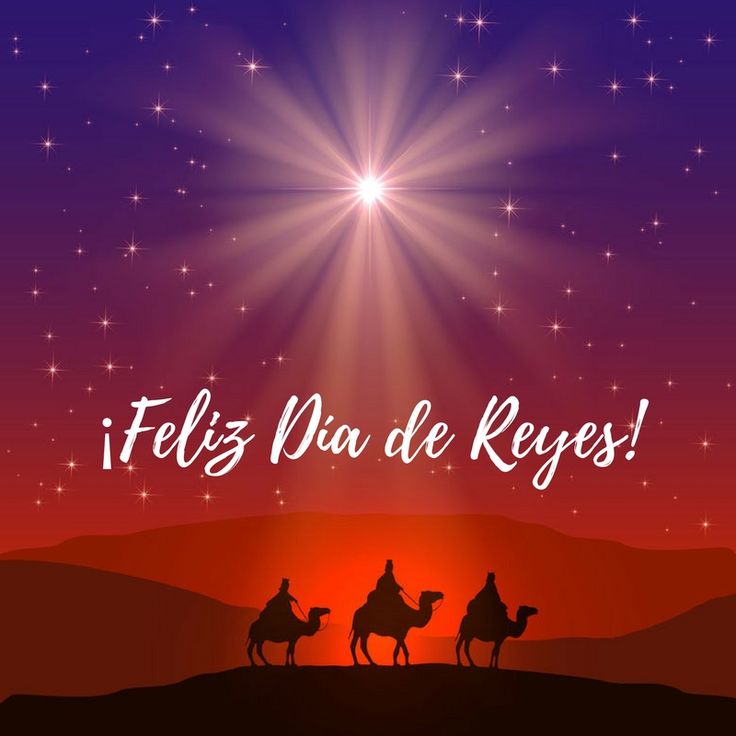
■ City of Estella : Convent of Iransu (XII century), Church of San Pedro de la Rua (XII century), Church of San Juan Bautista, Church of San Miguel, Monastery of Nuestra Señora de Irache, Art Gallery Navarre, bridge over the Ega River, San Martin Square, Palace of the Navarre Kings, Las Fueros Square.
■ City of Tudela : St. Mary’s Cathedral (XII century), Magdalene Church (XII century), Saint Nicholas Church (XII century), Montreal Tower, Deccan’s Palace (XV century), Admiral’s House (mid-16th century .), Church of St. George (XVII century).
Curious facts
■ Navarre is mentioned in Vita Caroli Magna, a biography of Charlemagne by the Frankish scholar Einhard, or Egingard (circa 770-840), in the ninth century. This work describes the campaigns of Charles to the Ebro River.
■ The Historic Basque Country, aka the Greater Basque Country, consists of the historical provinces of Alava, Biscay, Guipuzcoa, Navarre (part of Spain), Labourdie, Zuberou and Lower Navarre (part of France).
